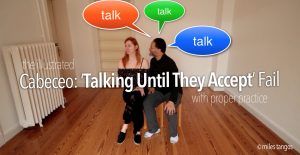
Today’s #Tango Thought 077: Tango Cities.
Today’s Tango Thought covers a labor of Tantalus … where is Tango danced and in what cities ? What follows is by no means an exhaustive list of places where tango is danced, it only scratches the surface.
At one point in time or another there has been a concerted directive to classify, and qualify, and quantify the number of cities/places where Tango is danced, where you can get information (because you’re traveling near there and want to know if there’s dancing), or who or where you can study to learn how (smart idea). However a global tango information resource seems like a dream, there have been many, many efforts to do just that. And each of them has failed for any one of a variety of reasons. 🙁
Follow the links of the city name and you’ll be directed to a facebook group.
Subscribe and ask your questions there.
This list will be updated as time goes by, so check back, and share this will everyone you know. Also If you are a facebook page organizer for a particular city that’s not on this list, please comment below with a link to your page and city name. Thanks.
The City List:
New York, San Francisco, San Diego, Los Angeles, Houston, Miami, Paris, London, Berlin, Moscow, Tokyo, China, Prague, Rome, Athens, Zurich, Helsinki, Copenhagen, Shanghai, Hong Kong, Brisbane, Sydney, Melbourne, Frankfurt, Lincoln, Colorado, Vienna, Perth, Budapest, Bucharest, Minsk, Chicago, Austin, Stockholm, Portland, Oslo, Amsterdam, New Orleans, Nijmegen – El Corte, Brussels, Munich, Milan, Malta, Madrid, Lisbon, Toronto, St. Louis, Mexico City, Hawaii, Just to name and tag a few. For Buenos Aires Milongas, see ‘Hoy Milonga’. (note: some cities have multiple groups, the ones with the largest group of members was chosen) #SocialTango #SocialDance #ArgentineTango#TangoDancing
076: Salon Canning | 078: Mens’s Shoes
see more tango thoughts – share: bit.ly/thought-077
Free Registration to Tango Topics & get your free Tango Primer. For the advancing dancer that wants to go deeper you can also subscribe and get a Gold, Gold+, Gold+Video, Diamond, & Diamond+Video. Sign up and continue your tango journey today!
Going to Buenos Aires ? Get the Buenos Aires Tango Primer Today!

Please fix the errors above










